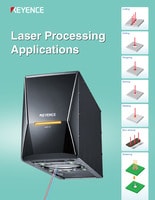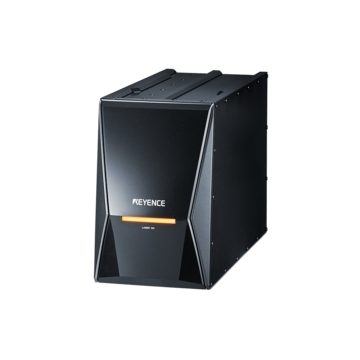Laser Marking Systems / Laser Markers
Prismatic vs. Cylindrical Cells: What is the Difference?
-
Tags:
- Electric Vehicle , Battery , Laser Cleaning
Batteries are used for powering all types of electronic devices—from power tools and medical devices to everyday electronics. But the word “battery” doesn’t encapsulate the specifications behind the types of cells powering these devices. Two popular battery types are prismatic and cylindrical cells. These cells are notable for their qualities as well as the different ways in which they function.
Prismatic and cylindrical cells differ in uses, energy density, thermal performance, and life cycle. In some cases, they are used for the same application, but these unique qualities make it important to understand their use cases when selecting the right battery for different applications. No overall “better” cell exists, but each has advantages depending on your overall design and goals.
With that said, read on to learn the ins and outs of prismatic vs. cylindrical cells.
What is a Cylindrical Cell?
A cylindrical cell comprises rolled-up electrodes and separators stored in a cylindrical shape can. As one of the first batteries ever made in 1900, cylindrical cells are versatile and are produced quickly at a low price.
We’re here to provide you with more details.
Reach out today!

What is a Prismatic Cell?
Compared to cylindrical cells, a prismatic cell is a newer type of cell. Only discovered recently in the 1990s, a prismatic cell is rectangular and made up of stacked or flatted electrodes and separators. Prismatic cells were invented to improve manufacturing efficiency because they are bigger yet more compact than cylindrical cells.
Discover more about this product.
Click here to book your demo.

What is the Difference Between a Cylindrical and Prismatic Battery Cell?
Cylindrical and prismatic cells can have similarities, such as both being used as EV batteries or both being composed of lithium-ion cells. However, there are stark differences between the two that make manufacturers choose one over the other.
Shape
Of course, the most apparent difference between a prismatic cell and a cylindrical cell is the shape.
- Prismatic Cell
- A prismatic cell is thin and rectangular. Because of this, they can easily be made into battery packs holding layers of prismatic cells. The flattened shape holds the energy together and leaves no room for energy to escape. Also, since their shape is flat, prismatic cells can be made into a customizable prismatic battery cell pack for specific applications.
- Cylindrical Cells
- Cylindrical cells are indeed cylindrical, which can be both an advantage and disadvantage. For example, think of a classic AA battery that goes into your TV remote. These cells are smaller than prismatic tools and can’t be stacked as easily because of their shape. Since the sides are curved, the stacking leaves gaps between the cells instead of compacting them on top of each other.
Although the gaps can be a disadvantage because they take up more space in a battery pack or let out energy, they can also be an advantage to promote airflow, and the cylindrical shape can discharge energy fast without swelling. The shape of cylindrical cells allows them to combat severe environments like space.
Energy Density
Energy density is the amount of energy a cell holds per volume. Depending on the application, the differences in energy density can be a benefit or a hindrance. The topic of energy density is most notable in the EV community as there is debate about what type of energy density an EV should have for optimal safety and longevity.
Whether prismatic vs. cylindrical cells have a greater energy density is also debatable. It is often reported that the cylindrical cell has the higher energy density, but the prismatic cell has more energy per cell due to the larger size and ability to pack closer together.
At the end of the day, it is due to other cell qualities that determine whether prismatic vs cylindrical cells have higher density. With energy and energy density, it’s important to keep in mind the size difference between prismatic and cylindrical and how each is stacked.
Life Span
- Prismatic Cell
- A prismatic battery cell has a lifespan of 2,000 cycles. While this is shorter than cylindrical cells, that doesn’t necessarily imply a negative because a long life cycle isn’t always required. A prismatic cell can also reach longer life spans when stacked into a battery pack.
- Cylindrical Cell
- Cylindrical batteries have a lifespan of 25,000 cycles, which is a driver for their use of longevity.
Thermal Performance
Thermal performance is how well the cell responds and regulates heat, and the different shapes of the cells are the reason for the difference in their performances.
- Cylindrical Cell
- Because of the shape, cylindrical cells have a better thermal performance from cycling the energy. Also, the spacing between the cells when stacked keeps the cells from overheating.
- Prismatic vs. Cylindrical Cells
- Since prismatic cells are stacked on top of each other, they overheat faster and easier than cylindrical cells. The rectangular shape doesn’t cycle the heat as well as the cylindrical shape does. Additionally, since there are no gaps between cells, one overheated prismatic cell can harm the other cells.
Uses
Because of their differences in shape, thermal performance, energy density, and lifespan, cylindrical and prismatic cells have different uses. Although they may both be found in certain products, they are generally used for different functions.
- Cylindrical Cells
- Cylindrical cells are used for electric bikes, medical devices, consumer electronics, smoke alarms, and toys.
- Prismatic Cells
- Prismatic cells have flexible uses because of the stacking and are commonly used for applications needing high powers. Prismatic cells are used for energy storage systems (ESS), medical devices, hybrid and electric vehicles, and industrial equipment.
Discover more about this product.
Click here to book your demo.

Which to Pick: Cylindrical vs. Prismatic?
There’s no one-size-fits-all for prismatic vs. cylindrical cells; it all comes down to what you want out of your battery. A prismatic cell battery would be way too strong for powering a desk lamp, but a cylindrical cell might not be the most cost-effective option for powering a large energy storage system.
In addition to basic cylindrical and prismatic cell characteristics, there are characteristics like chemical makeup, manufacturing methods, and ratios that add another layer to the choice between the two.
Ultimately, prismatic cells are used best when mighty and flexible cells are needed, while cylindrical cells are better for reliability and withstanding changing environments.
We’re here to provide you with more details.
Reach out today!

Related Downloads

This booklet covers a wide range of laser processing techniques - such as cutting, drilling, and deep engraving - as well as welding and soldering that are unique to lasers.




